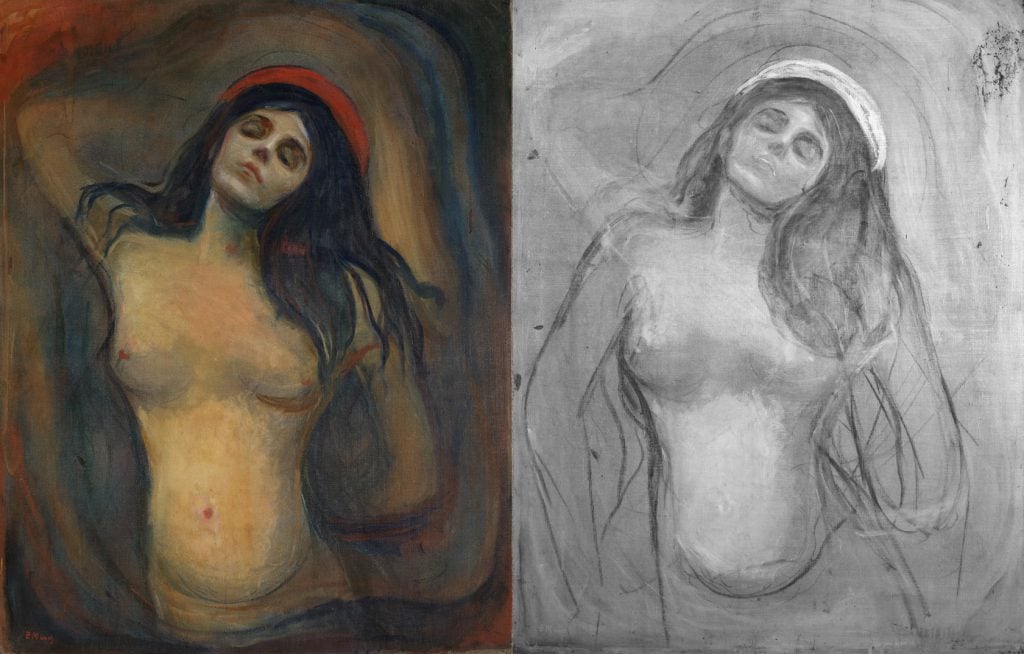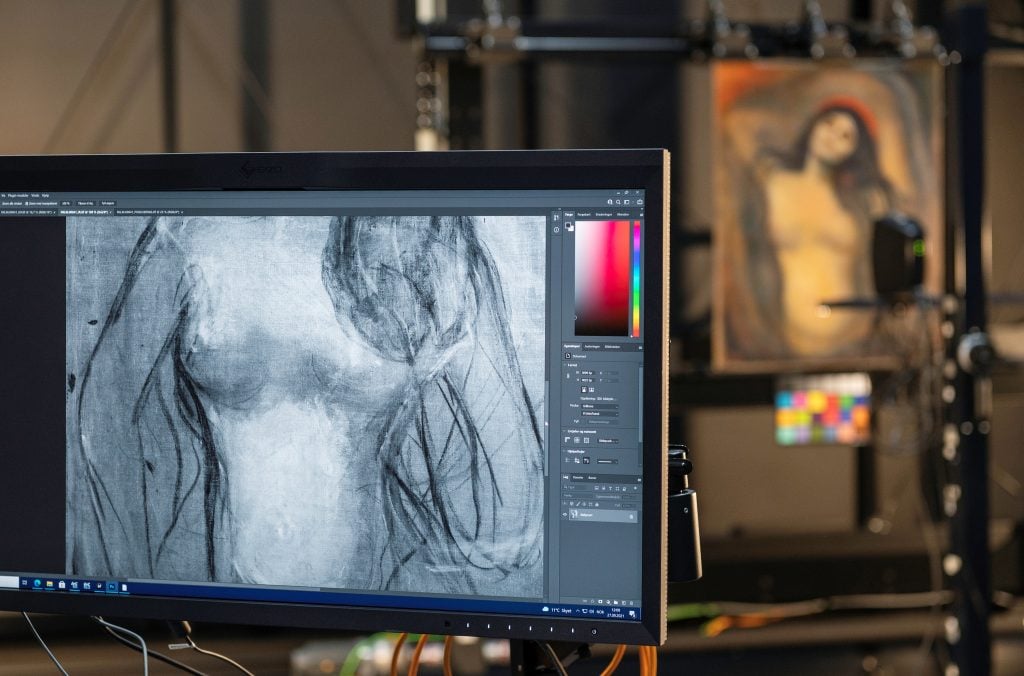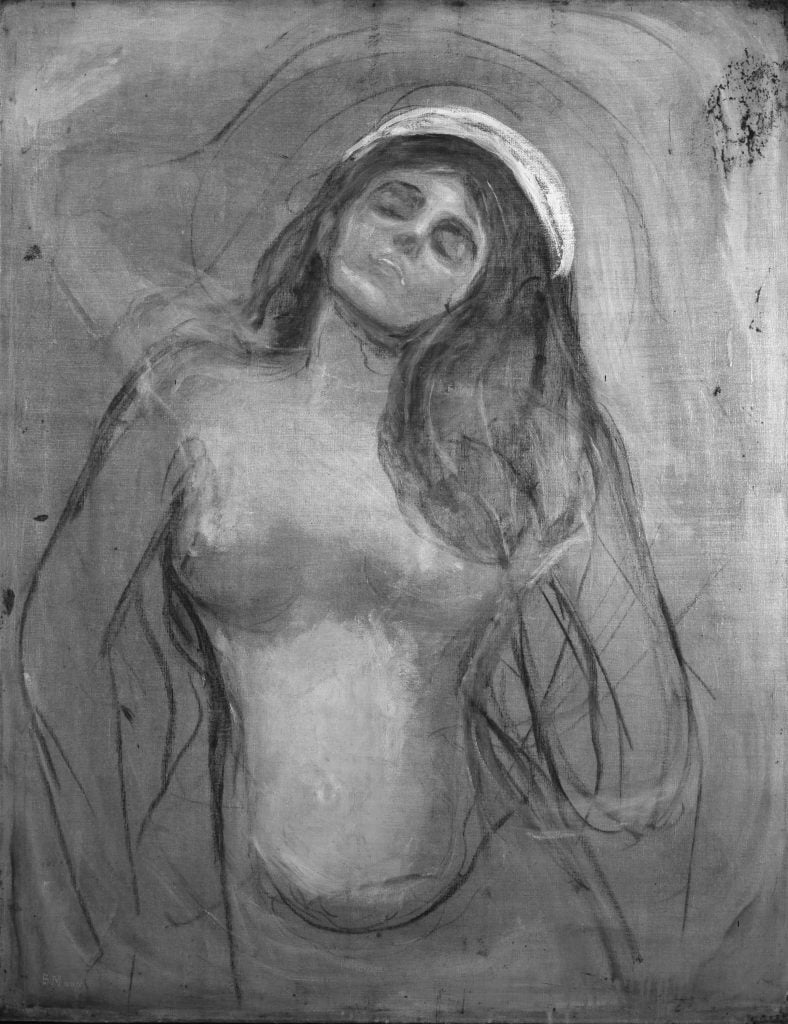Art History
Munch Created a Chaste Version of His Infamous ‘Madonna’ Painting Hidden Beneath the Racy One He’s Famous For
The artist’s erotic depiction of the Virgin Mary was more conventional at first, it turns out.

The artist’s erotic depiction of the Virgin Mary was more conventional at first, it turns out.

Taylor Dafoe

In the 1890s, Edvard Munch’s erotic depiction of the Madonna, pictured with her ams raised behind her arched back, scandalized viewers. Now, researchers at Norway’s Nasjonalmuset, or National Museum, have discovered a preparatory drawing under the painting, indicating that the artist tried out traditional poses before settling on the more suggestive one.
In the underlying sketch, the figure’s arms hang limply, dangling by her waist. The composition lacks the charge we’ve come to associate with Munch’s masterpiece, but the enigma of his intention remains.
“Along with other early sketches with similar motifs,” explained the museum’s curator, Vibeke Waallann Hansen, in a statement, “the underdrawings in the painting tell us that he was hesitant about how to place the arms of his Madonna.”

Photo: Borre Hostland. Courtesy of the National Museum of Norway.
Museum conservator Thierry Ford and photographer Børre Høstland discovered the latent drawing while performing routine maintenance on the painting ahead of the museum’s reopening next summer. Their finding, made possible through infrared reflectography, effectively proved long-held suspicions about the existence of such sketches below the artwork’s surface.
“The discovery was unexpected and exciting,” Ford said. “It also confirms that there is more to reveal in the museum’s Munch collection when it comes to his technique.”
It confirmed something else, too: the year the piece came to life.
Munch created five Madonna paintings between 1894 and 1897, but the exact years of each, and the order in which they were finished, had been something of a mystery. With this recent revelation, researchers have concluded that the National Museum’s version of the painting came first, in 1894. It entered the institution’s collection 15 years later, in 1909, via personal gift.

Photo: Borre Hostland. Courtesy of the National Museum of Norway.
Two of Munch’s other Madonna iterations are housed at the Hamburg Kunsthalle and Oslo’s Munch Museum, while the remaining two are owned by private collectors. In each example, the titular figure hovers before a swirling background, a red halo atop her head.
“Is she standing? Or is she lying down? What is the background? Is it water or light? Or a kind of atmosphere? Munch was first thinking of having her arms behind her back, which looks more like she’s standing,” Waallann Hansen told the Guardian. “With the position he ended up with, he introduced more ambiguity.”
Fresh from conservation, the painting is set to go on view again when the National Museum opens its new building on June 11, 2022. There are numerous Munchs in the institution’s collection—including, famously, the original 1893 version of The Scream.